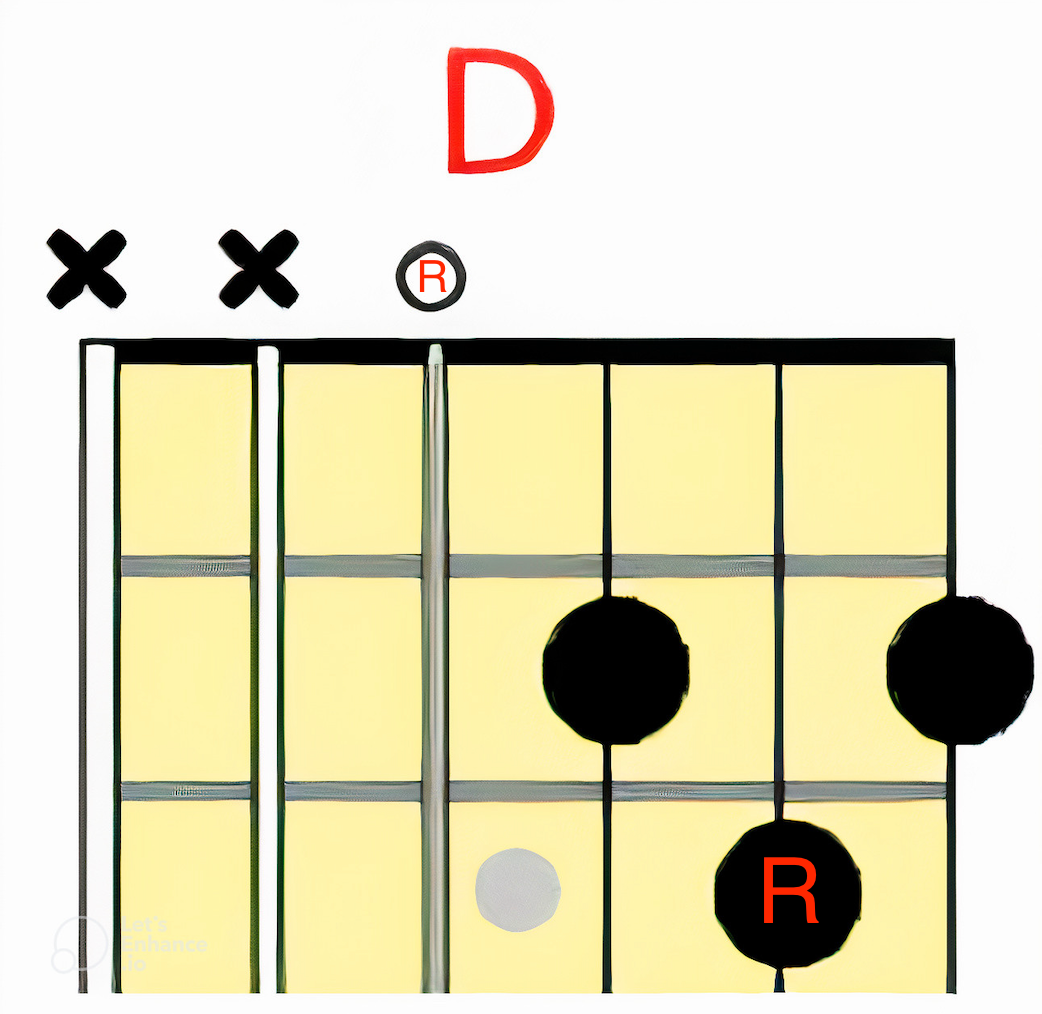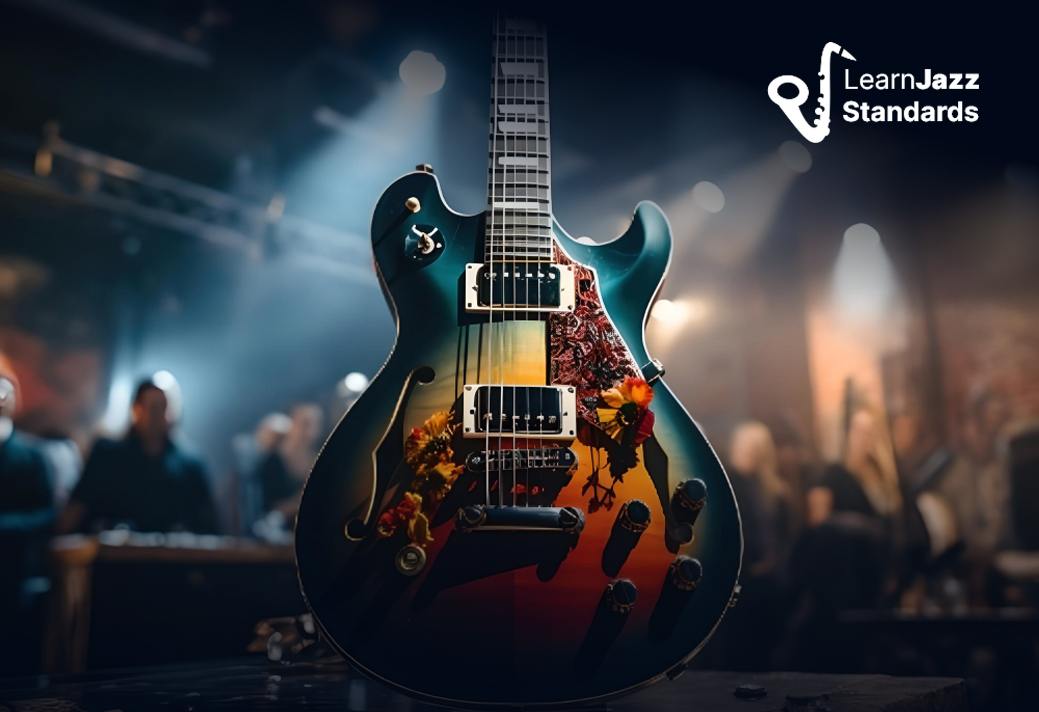Guitar players have it hard, but systems like the CAGED system scales can help you understand the guitar fretboard maze! You’ll become a more competent guitar player by memorizing the CAGED system, which associates major scale patterns with basic open chord shapes.
In this article, we’ll explore the CAGED system and how it relates to all the CAGED chords. Then, we will use it to discover the C major scale all over the fretboard. However, These CAGED chord shapes and scale patterns are transposable to other parts of the fretboard.
We’ll discuss the CAGED system’s uses, advantages, and drawbacks. By the end of the article, you’ll be one step closer to mastering the entire neck of the guitar fretboard!
But before we begin, I have a quick question—
Do you find yourself struggling to understand the guitar?
You’ve probably spent hours watching every guitar YouTube channel trying to understand the fretboard and music theory related to the guitar. You might pay hundreds of dollars monthly for lessons and still find the fretboard confusing.
If you want to get past the roadblocks and accelerate your guitar playing and comprehension, then you need to check out the Learn Jazz Standards Inner Circle.
The Inner Circle not only helps you become a better musician, but with our Jazz Guitar Accelerator Course, you’ll have the power to unlock the secrets of the fretboard and become a better soloist.
If you want to master jazz guitar and how to solo on it, check out the Inner Circle.
Come see what we’re all about.
Table of Contents
Why Use The CAGED System To Memorize the Major Scale?
Despite occasional eye-rolls from other instrumentalists, guitarists should not feel bad that their instrument is confusing!
A piano has one axis of pitch—left to right. Instruments with a fretboard and multiple strings, like a guitar, have two pitch axes. You can raise the pitch by moving up the fretboard, or you can increase the pitch by moving across the six strings.
This leads to the paradox of choice, which makes first learning the architecture of guitar much more challenging than learning piano or saxophone.
There are so many options that beginner players often don’t know where to start when trying to learn the major scale, play it in different keys, and branch out of their comfort zone to other positions.
The CAGED system was one solution for organizing and conceptualizing the guitar fretboard.
History of the CAGED System
The guitar’s standard tuning (EADGBE) results in a particular arrangement of notes on the fretboard, and naturally, there are multiple places where you can play the same pitch.
Guitarists realized they could create chord “shapes” based on the open position chords of C, A, G, E, and D and then move them up and down the neck to play these chords and associated scale positions throughout the entire fretboard.
This is the foundation of the CAGED system. However, the history of this method is a bit murky.
While it’s hard to pinpoint the exact origin or inventor of the CAGED system, it has long been an integral part of guitar pedagogy. It was likely used informally by guitarists for many years before it was officially recognized and named as a system.
The term “CAGED system” seems to have gained popularity in the late 20th century and can be tied to an article in the 1975 edition of Guitar Player Magazine:

Source: https://www.castaliapub.com/origins-of-the-c-a-g-e-d-system/
What is CAGED? (How The CAGED System Works)
The CAGED system breaks the fretboard into five manageable major scale shapes. These five scale positions are associated with easy-to-remember open chord shapes—the basic cowboy chords all guitar students learn.
The word CAGED is an acronym built from the name of the chord shapes used in the system.
The relationships between these interconnected shapes move together based on which key you are playing.
- C Major Chord
- A Major Chord
- G Major Chord
- E Major Chord
- D Major Chord
The CAGED system of scales is based on these five open chord shapes:

Despite being named after major chords, all CAGED scales and chords are transposable, meaning they can be slid up or down the frets and applied to any key. For example, the C major scale shape can be played from any position on the fretboard.
If you know your barre chord shapes, you’ll definitely recognize these chord shapes.
The name of the scale shape may be the C major chord shape, but the scale’s actual notes (and the major scale’s key) might be completely different depending on which fret you start on.
It’s important to remember that the scale shapes’ names are just for memorization purposes. Any one of the C form, A form, G form, E form, or D form scale shapes can be played in any key all over the guitar neck.
While the positions change for different keys (determining where your hand starts, whether it’s higher or lower on the neck), the shape of the major scale stays the same. Memorizing only five scale patterns allows you to play the major scale and chord shapes in all 12 major keys.
Additionally, the relationship between all the shapes remains consistent no matter what key you are playing the major scale in.
Each chord shape connects to the next chord:
The C form scale pattern will always connect to the A form scale pattern, which will always connect to the G form scale pattern, which connects to the E shape, which then connects to the D shape. Then, the D shape connects back to the C shape, one octave higher than where you started.
And thus, the sequence continues until you run out of frets!

CAGED Chord Shapes—Main Takeaways
Here are the main takeaways so far:
- The CAGED system is designed to help you memorize the major scale and major chord voicings all over the guitar fretboard.
- By associating five major scale shapes with five major chord shapes, guitar students can easily remember the five different positions of the major scale.
- The names of the five shapes—C, A, G, E, and D—do not necessarily reflect the actual names of the notes in the scale. The idea is to connect an easy-to-remember major chord shape with one major scale position.
- No matter where you jump into the CAGED system sequence, the sequence remains the same: the C scale shape is connected to the A scale shape, which is connected to G, and so on. D connects back to C to start the sequence again.
BEFORE YOU CONTINUE...
If music theory has always seemed confusing to you and you wish someone would make it feel simple, our free guide will help you unlock jazz theory secrets.

CAGED System Guitar: The Five Chord Shapes and Scale Shapes
We’ve finally arrived at the actual scale and chord shapes.
Check out the following diagram.
You’ll notice the basic chord shapes in the top row and the scale shapes in the bottom row. Notice the root notes in red. The diagram below shows every scale position related to the named open chords (C, A, G, E, and D).
Note: scales with asterisks cannot be played in that particular position due to the open strings.

1. C Shape and Scale (Phrygian Mode)
With the C form scale, the root note is on the A and B strings. This scale shape is identical to the Phrygian Mode of the major scale (the third mode of the major scale).
C Major Chord Shape:

C Chord Scale:

2. A Shape and Scale (Lydian Mode)
With the A form scale, the root note is on the A and G strings. This scale shape is identical to the Lydian Mode of the major scale (the fourth mode of the major scale).
A Shape Chord:

A Shape Scale:

To keep this scale shape in the key of C major, make the nut the 1st fret.
3. G Shape and Scale (Aeolian Mode)
With the G form scale, the root notes are on both the E strings and the G string. This scale shape is identical to the Aeolian Mode or natural minor scale (the sixth mode of the major scale).
G Shape Chord:

G Chord Scale:

4. E Shape and Scale (Locrian Mode)
With the E form scale, the root notes are on both the E strings and the D string. This scale shape is identical to the Locrian Mode (the seventh mode of the major scale).
E Chord Shape:

E Chord Scale:

Here, the nut is at a theoretical -2 fret to keep the shape in C major. In other words, count the second fret as the nut or the open strings.
5. D Chord Shape (Dorian Mode)
With the D form scale, the root note is on the D and B strings. This scale shape is identical to the Dorian Mode (the second mode of the major scale).
D Major Chord:

D Chord Scale:

This article references modes like the Dorian mode and Phrygian mode. Are you confused by modes? Check out this post for a crash course to understand the major scale modes.
How Do I Practice CAGED System Scales?
Here is the CAGED system as applied to the key of C Major (the C major scale across the entire fretboard):

Here are the best practices when practicing CAGED scales (and other scales, for that matter):
- Start Slowly: Start learning a new scale by playing it very slowly. This will help you focus on accuracy, finger placement, and the sound of each note. Speed can come later once you’re comfortable with the scale.
- Use a Metronome (or drum beat/backing track): Always practice scales in time! Practicing scales with a metronome helps develop your sense of rhythm and timing. Begin at a slow tempo and gradually increase as you become more comfortable with the scale. Alternatively, keep the metronome at a slow tempo and break the big beat into smaller pieces to play faster.
- Practice Regularly: Consistency is key when practicing scales. Even just 10 to 15 minutes of focused scale practice each day can lead to significant improvement over time.
- Play in Different Keys: Once you’ve mastered the CAGED system in one key, try transposing it to another. This will help familiarize you with the instrument’s fretboard or keyboard and increase your versatility as a musician.
- Use Different Articulations: Try playing the CAGED scales with different articulations, such as staccato (short and detached) or legato (smooth and connected). This not only provides variety but also enhances your expressiveness as a musician.
- Practice Scales in Sequences: Instead of playing scales up and down linearly, try playing them in sequences (e.g., thirds, fourths). This will make your practice more interesting, challenging, and musically relevant.
- Use Scale Patterns: Once the linear scale is comfortable, introduce patterns. Patterns can include skipping notes, playing notes in triplets, or other rhythmic variations. This helps improve your dexterity and musicianship and expands your ability to improvise on the spot.
- Apply Scales to Music: Take these scales out of the practice room! Try to apply the scales you learn when playing with other musicians (or with a backing track if none are at hand).
- Learn Different Types of Scales: Though the CAGED system we discussed applies to the major scale, the principles of the CAGED system can be used for other scales. Take the principles of the CAGED system to explore melodic and harmonic minor scales and chords.
Check out this post to learn more about the most important scales you need to know (beyond the major scale).
And if you want a comprehensive crash course covering everything you need to know to play jazz guitar, check out our blog post Introduction to Jazz Guitar: A Beginner’s Guide For Jazz Guitarists.
Join The Learn Jazz Standards Inner Circle To Accelerate Your Guitar Chops
Remember, the CAGED system is just one of many methods for understanding and navigating the guitar’s fretboard. It’s a valuable tool for many guitarists, but like any method, its effectiveness can vary based on the individual’s learning style and musical goals.
Are you trying to master the guitar fretboard? Are you struggling to learn scales in different positions, master arpeggio patterns, and chord voicings?
Do you find it difficult to see progress in your jazz guitar playing despite hours of practice?
Then, you need to check out the Learn Jazz Standards Inner Circle.
We have a Jazz Guitar Accelerator course designed to transform casual players into advanced guitar players who know their guitars inside and out.
Don’t let the neck stump you any longer. Become the jazz guitarist you want to be.









